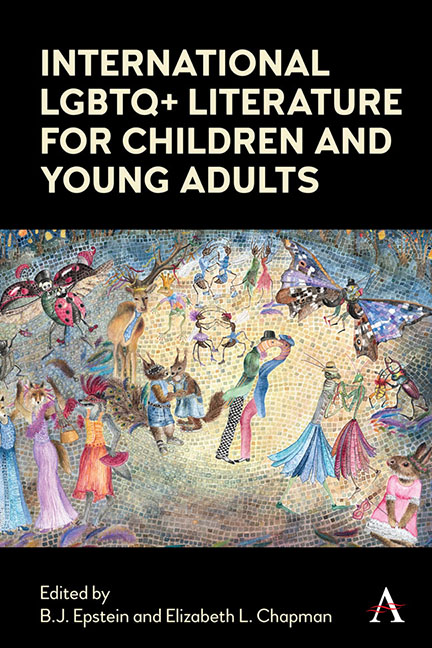Book contents
- Frontmatter
- Dedication
- Contents
- List of Illustrations
- Acknowledgements
- Notes on contributors
- Introduction
- BRAZIL
- FRANCE
- GERMANY/ AUSTRIA
- GREENLAND
- INDIA
- INDIGENOUS WRITING
- ITALY
- MULTINATIONAL
- MULTINATIONAL
- MULTINATIONAL
- THE PHILIPPINES
- SLOVENIA
- SOUTH KOREA
- SPAIN
- SWEDEN
- SWEDEN
- List of Primary Texts
- Index
Chapter Fourteen - Stories out of the Closet: LGBTQ+ Children’s Picturebooks in Spain
Published online by Cambridge University Press: 18 November 2021
- Frontmatter
- Dedication
- Contents
- List of Illustrations
- Acknowledgements
- Notes on contributors
- Introduction
- BRAZIL
- FRANCE
- GERMANY/ AUSTRIA
- GREENLAND
- INDIA
- INDIGENOUS WRITING
- ITALY
- MULTINATIONAL
- MULTINATIONAL
- MULTINATIONAL
- THE PHILIPPINES
- SLOVENIA
- SOUTH KOREA
- SPAIN
- SWEDEN
- SWEDEN
- List of Primary Texts
- Index
Summary
Introduction
Through children's books we can fly away, if the story lets us do it, and talk about topics – even controversial ones – that open a door to reflection. If we look back, we will easily find some stories in children's literature that are about being different in a generic way, as in The Ugly Duckling: after feeling different from his brothers, because he is grey and bigger, the ugly duckling realizes that he is actually a gorgeous swan. In this fairy tale, we can see that difference in a homogeneous world usually comes with being rejected by those who do not treat you as an equal. In another way, in Swimmy, the writer and illustrator Leo Lionni also describes difference: its colourful pages tell the story of a little black fish that lives in a community of only little red fish. In this case, the differently coloured fish is the fastest, the bravest and the smartest, skills that will help him to save the whole group. To survive the tuna fish attack, the fish follow the idiom ‘strength in numbers’ and build a big fish shape with little red fish put together; the protagonist, the black one, is the eye. So I will start from here, with the baby duck that becomes a beautiful swan and the brave little fish that is the important eye, in order to think about the LGBTQ+ subject in literature for children, especially in Spanish picturebooks.
In this chapter, I will analyse some issues related to homosexuality, non-traditional family models and gender identity in picturebooks for children produced in Spain in the country's four official languages: Basque, Castilian, Catalan and Galician. I have used a selection of children's picturebooks that are in some way representative within the panorama of LGBTQ+ children's literature in Spain, and I will focus on fiction. For the selection, first I considered that the books described in the chapter should have a minimum standard of literary quality. However, in some cases, as we will see, the value of a book does not depend so much on its literary and/or artistic quality, but rather on the values it represents.
- Type
- Chapter
- Information
- International LGBTQ+ Literature for Children and Young Adults , pp. 257 - 274Publisher: Anthem PressPrint publication year: 2021

